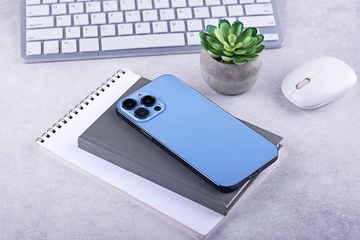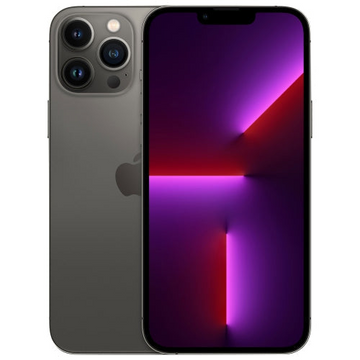Since its introduction in 2007, the iPhone has revolutionized the mobile phone industry, transforming not just how we communicate but also how we live, work, and play. Apple’s relentless innovation in both hardware and software has set the standard for the smartphone market, and each new iPhone release has brought with it a wave of excitement and technological advancements. Let’s take a journey through the evolution of the iPhone and how it has redefined mobile technology.
1. The Birth of the iPhone (2007)
The original iPhone, unveiled by Steve Jobs in 2007, was a groundbreaking product that combined a phone, an iPod, and an internet communicator into one device. It featured a 3.5-inch touchscreen, which was revolutionary for the time, eliminating the need for physical keyboards. The iPhone’s sleek design, intuitive user interface, and the introduction of iOS (then called iPhone OS) set it apart from traditional smartphones, marking the beginning of a new era in mobile technology.
Key Innovation: Multi-touch gestures and a touchscreen interface.
2. The App Store (2008)
In 2008, Apple launched the App Store alongside the iPhone 3G, allowing third-party developers to create apps and distribute them globally. This innovation transformed the iPhone from just a device into a platform for developers and users alike. The App Store opened up a new world of possibilities, from gaming to productivity tools, making the iPhone indispensable to everyday life.
Key Innovation: Introduction of the App Store, offering apps for everything from gaming to social media and business.
3. The Rise of Retina Display (2010)
The iPhone 4, released in 2010, introduced the Retina Display, a high-resolution screen that made text and images sharper than ever before. This marked a significant shift in how users interacted with their devices, setting a new benchmark for mobile displays. The iPhone 4 also featured a front-facing camera, enabling FaceTime video calls, which would become a staple of iPhone communication.
Key Innovation: Retina Display, bringing unparalleled clarity to smartphone screens.
4. Siri and Voice Recognition (2011)
With the release of the iPhone 4S in 2011, Apple introduced Siri, a voice-activated personal assistant. Siri marked the beginning of Apple’s move toward artificial intelligence (AI) and natural language processing, allowing users to control their phones with voice commands. This innovation paved the way for other voice assistants and AI-driven features across smartphones and smart devices.
Key Innovation: Siri, Apple’s AI-powered virtual assistant, making voice control mainstream.
5. Larger Screens and Touch ID (2013-2014)
The iPhone 5 and iPhone 6 marked a shift towards larger screens, addressing consumer demand for more screen real estate without sacrificing portability. In 2013, the iPhone 5S introduced Touch ID, a fingerprint recognition system integrated into the home button, enhancing security and ease of access.
Key Innovation: Touch ID, revolutionizing smartphone security with biometric authentication.
6. The Shift to Larger Displays and Apple Pay (2014-2015)
The iPhone 6 and 6 Plus, launched in 2014, brought larger screen sizes (4.7 inches and 5.5 inches, respectively) and a new design. It also introduced Apple Pay, turning the iPhone into a mobile wallet, enabling contactless payments. This cemented the iPhone’s role as more than just a communication device—it became an essential tool for modern commerce.
Key Innovation: Apple Pay, a secure, easy-to-use mobile payment system.
7. Dual Cameras and Portrait Mode (2016)
In 2016, the iPhone 7 Plus introduced a dual-camera system that allowed for better zoom and depth effects in photos, especially with the new Portrait Mode feature. This transformed smartphone photography, making the iPhone a preferred device for professional-quality photos.
Key Innovation: Dual-camera system and Portrait Mode, transforming smartphone photography.
8. Face ID and The Notch (2017)
With the iPhone X in 2017, Apple made one of its boldest design changes by removing the home button and introducing Face ID, a facial recognition system. The iPhone X’s edge-to-edge display and the iconic notch became defining features of modern iPhone design. Face ID also enhanced security, allowing users to unlock their devices with just a glance.
Key Innovation: Face ID, offering advanced facial recognition technology.
9. 5G and the A14 Chip (2020)
The iPhone 12 series, released in 2020, introduced 5G capabilities, enabling faster download speeds and improved connectivity. Apple’s A14 Bionic chip, the most powerful chip in a smartphone, brought unparalleled speed and efficiency, enhancing everything from gaming to augmented reality (AR) applications. The iPhone 12 also featured the return of MagSafe, enabling magnetic accessories and faster wireless charging.
Key Innovation: 5G and A14 Bionic chip, ushering in faster speeds and superior performance.
10. Always-On Display and Dynamic Island (2022-2023)
With the iPhone 14 and 15 Pro series, Apple pushed innovation even further with an "Always-On" display that provides at-a-glance information while conserving battery life. Additionally, the Dynamic Island feature reimagines how users interact with notifications and apps, making multitasking more fluid and intuitive. Apple continues to refine its camera system, making the iPhone a top choice for content creators.
Key Innovation: Always-On display and Dynamic Island, improving user interaction and multitasking.
The iPhone's Lasting Legacy
From the first iPhone’s multi-touch display to the current generation’s 5G capabilities and cutting-edge camera technology, Apple has consistently set new standards in the smartphone industry. The iPhone has not only transformed how we use mobile devices but has also had a profound impact on industries like photography, app development, and digital payments. As Apple continues to innovate, the iPhone’s role in shaping the future of technology is far from over.
Final Thoughts
The evolution of the iPhone is a testament to Apple’s commitment to pushing boundaries and redefining what a smartphone can do. With each iteration, the iPhone has introduced new technologies that shape our daily lives, making it more than just a phone—it’s a lifestyle companion, a creative tool, and a symbol of technological excellence. As we look forward to the next generation of iPhones, one thing is clear: Apple will continue to revolutionize mobile technology for years to come.






